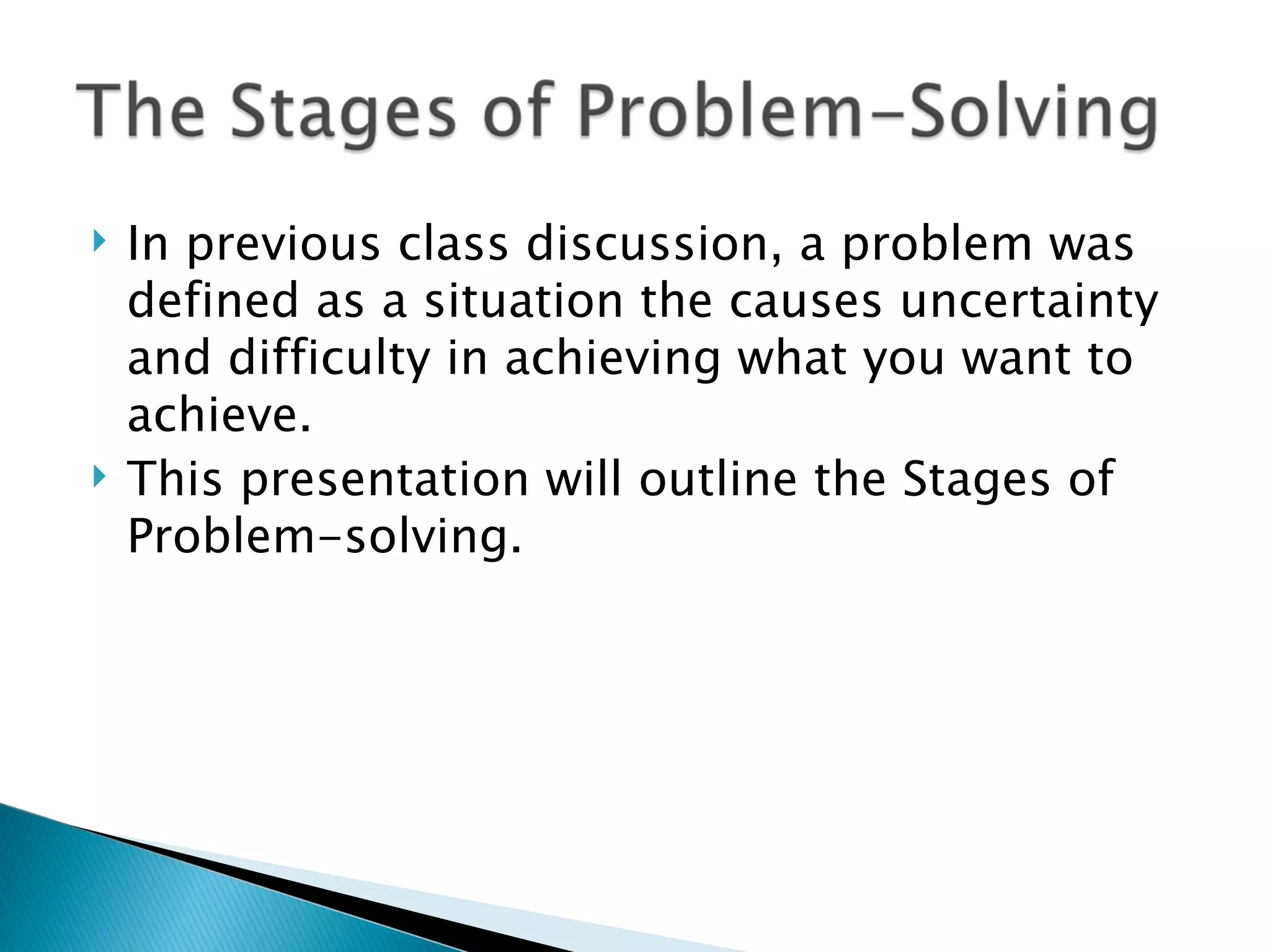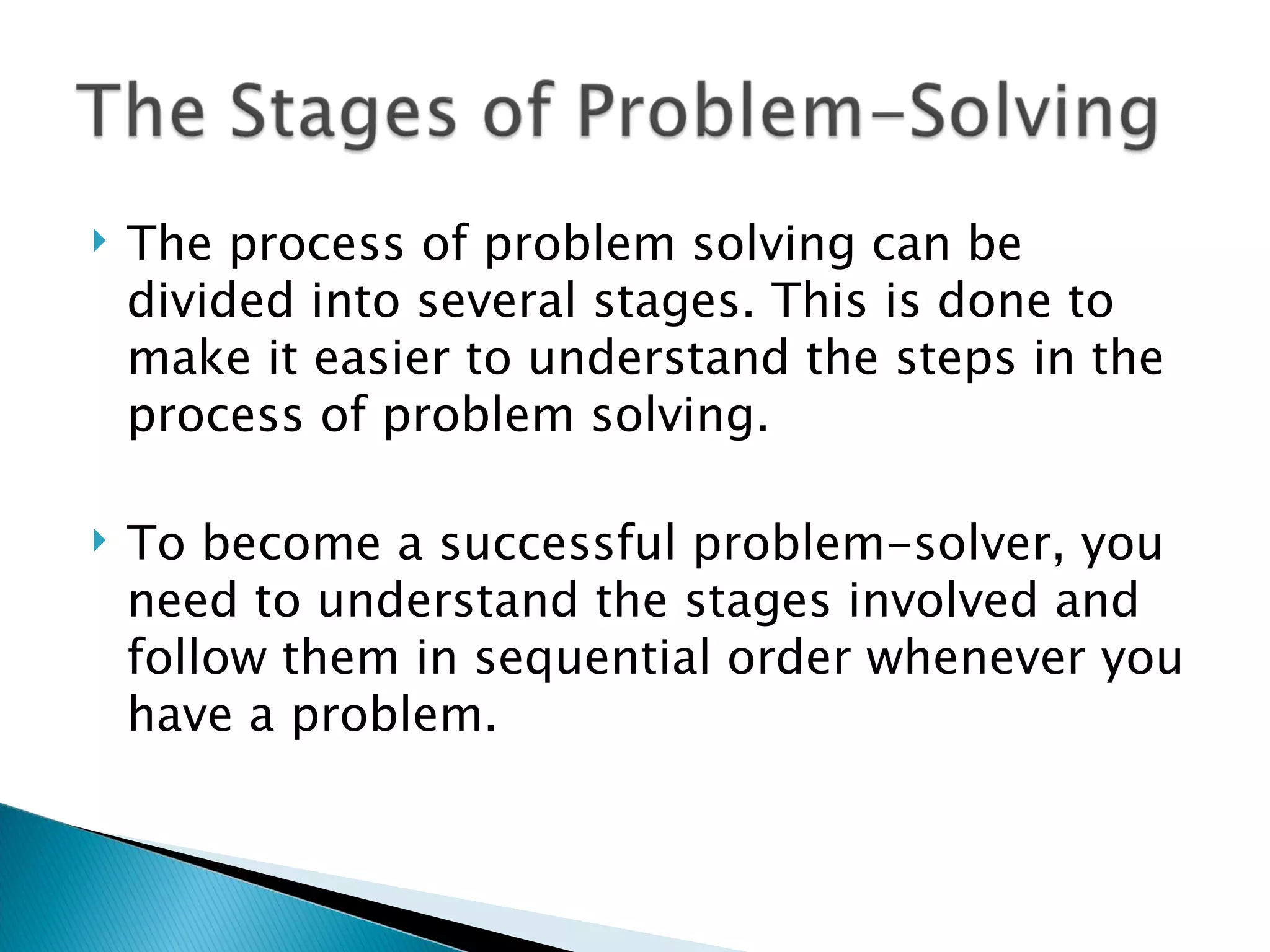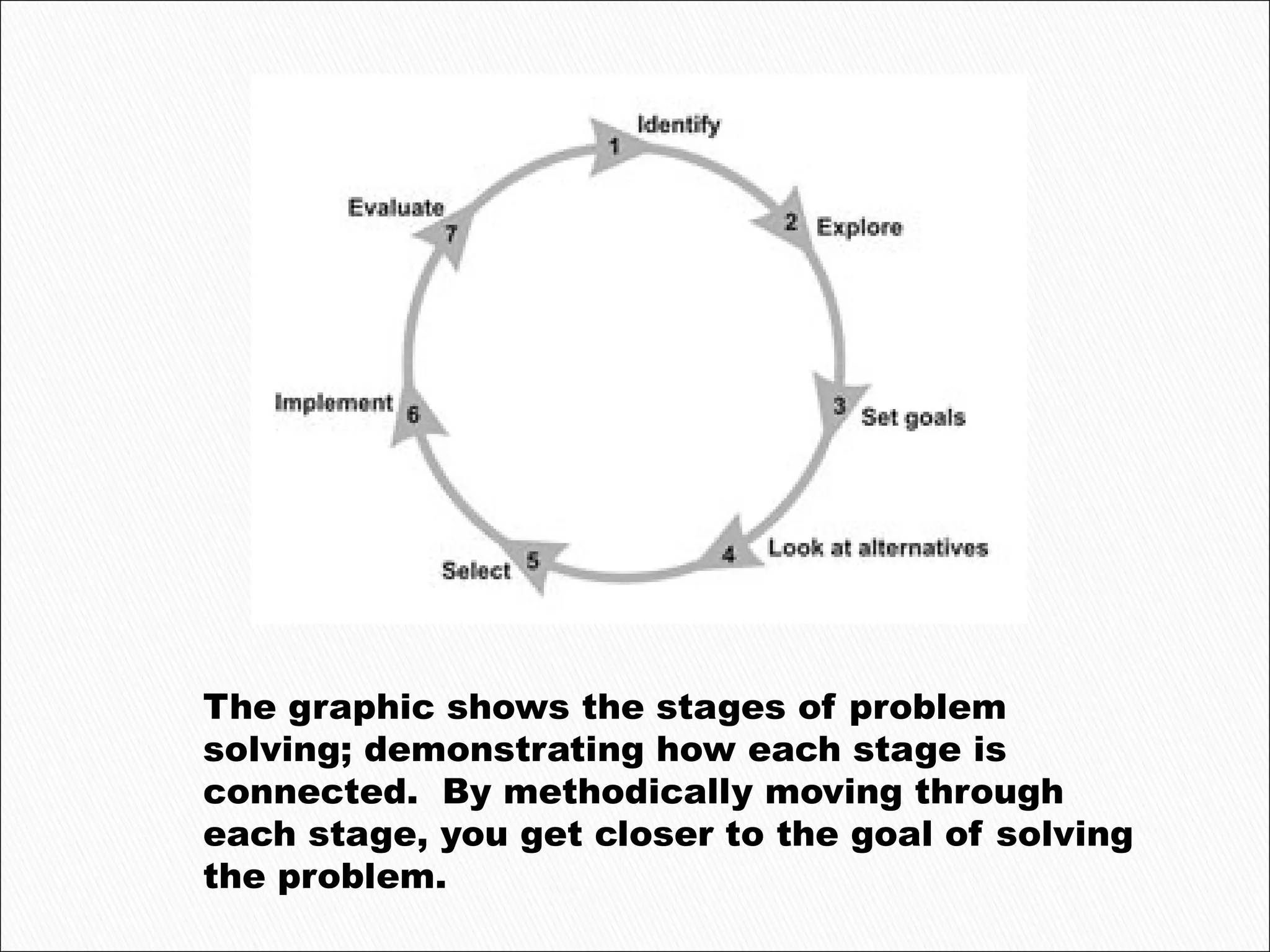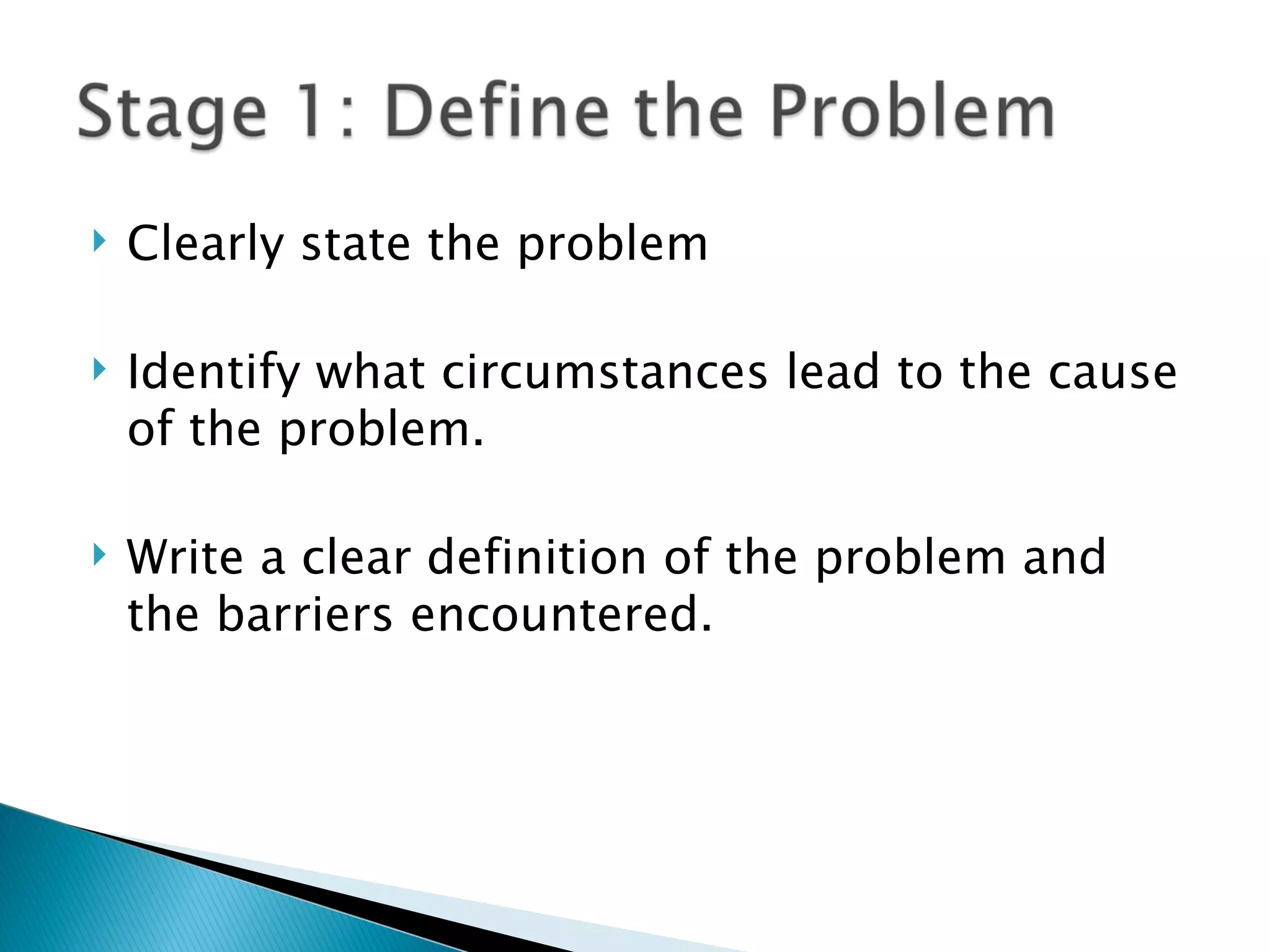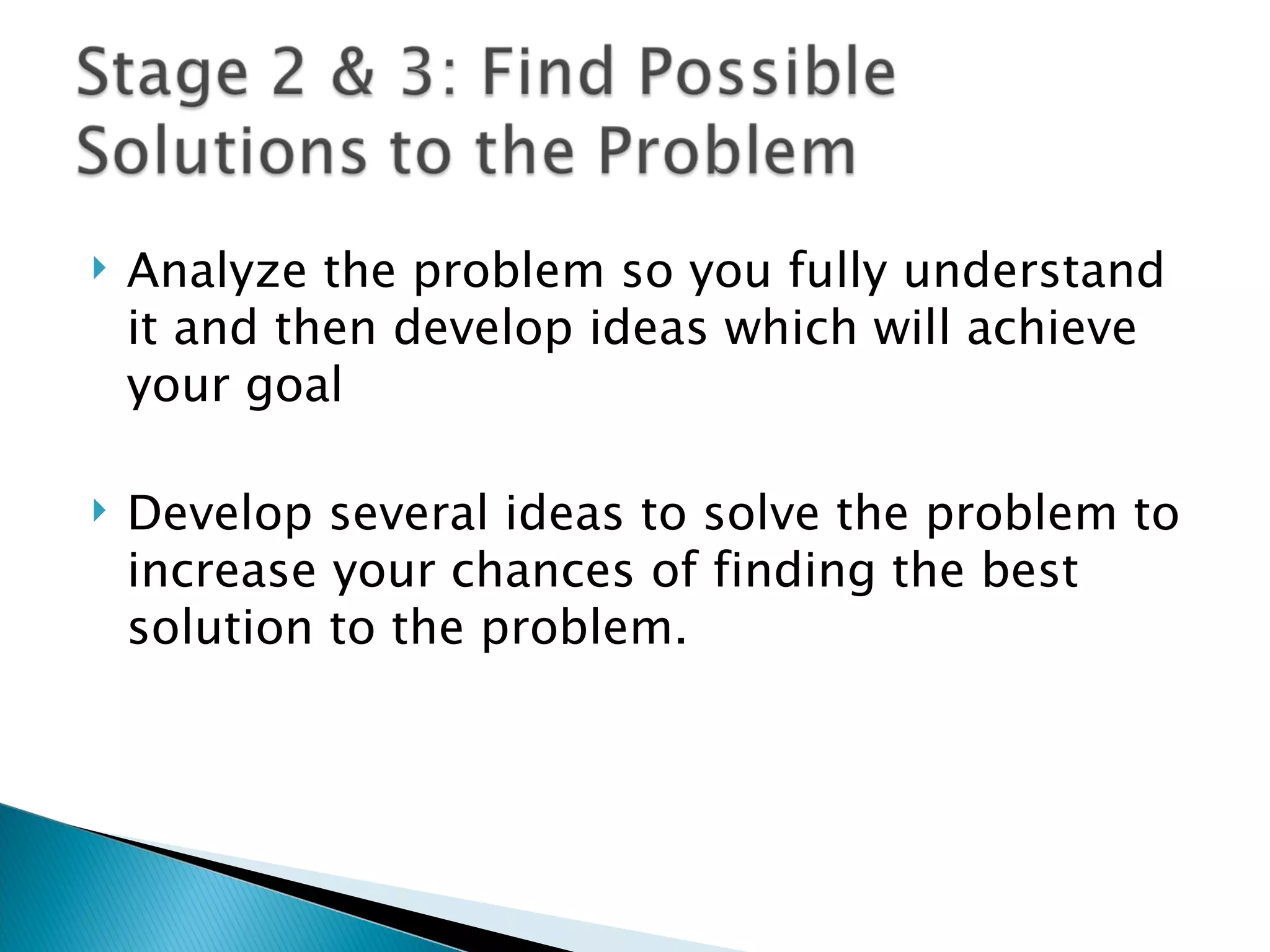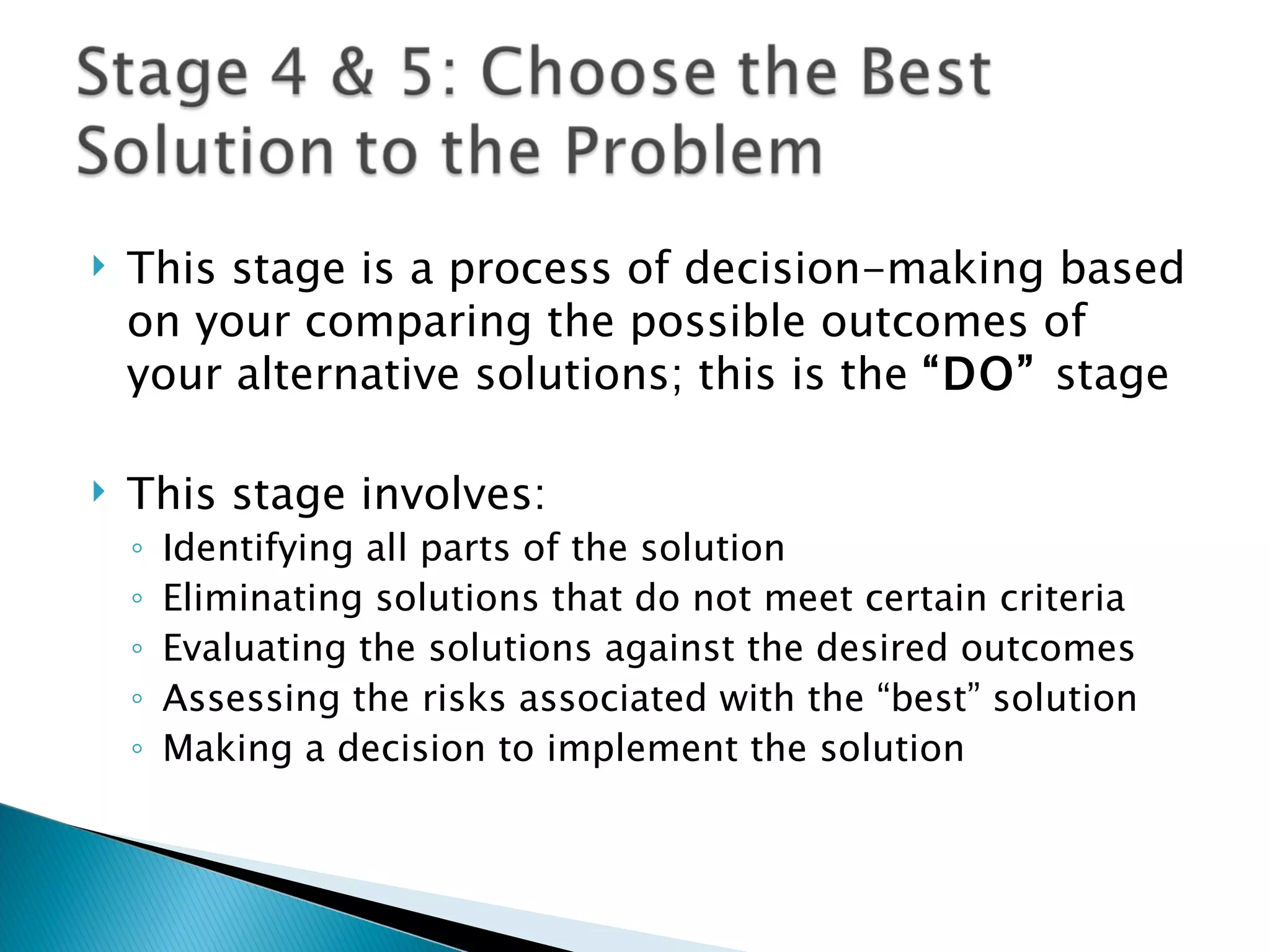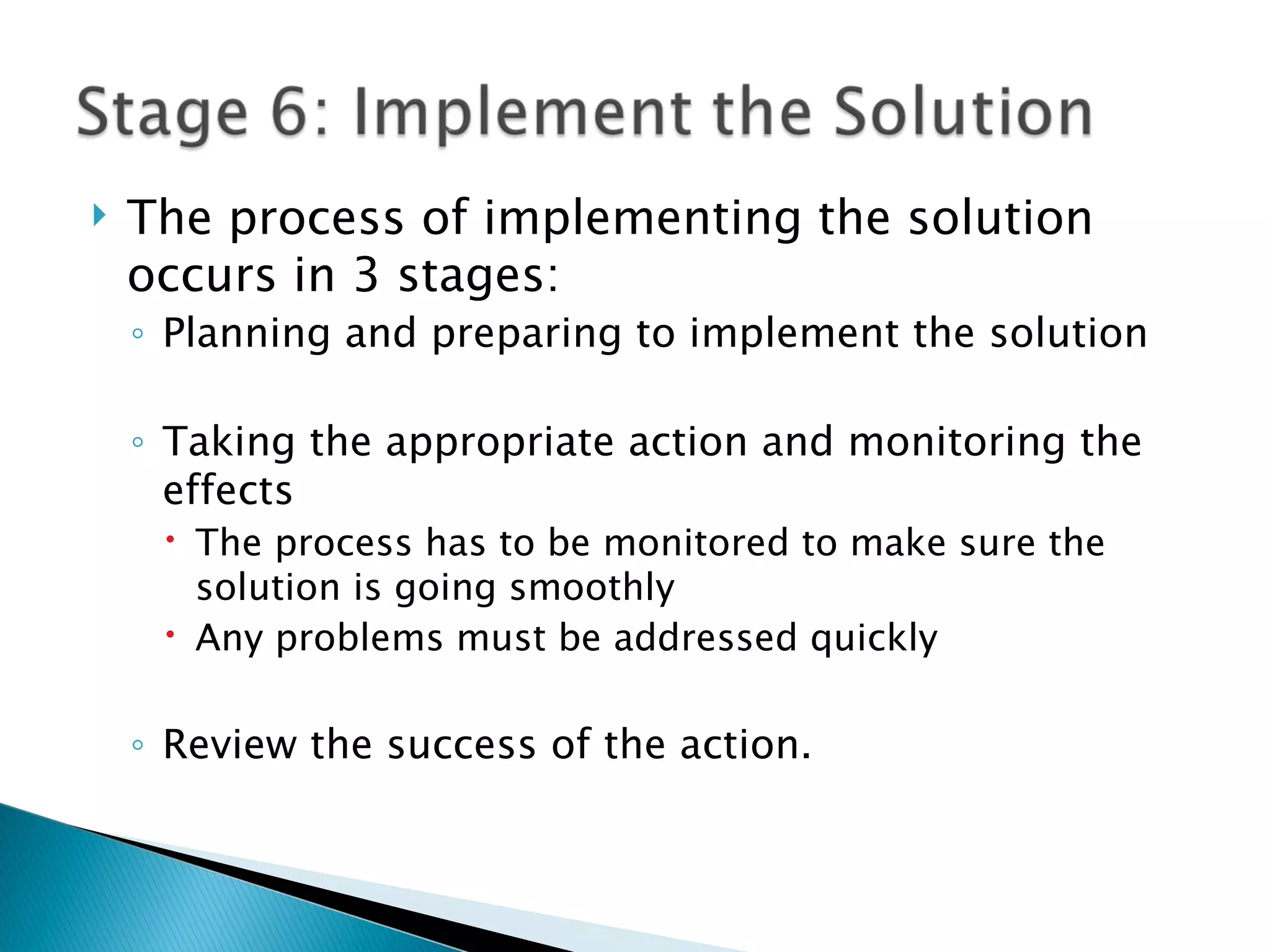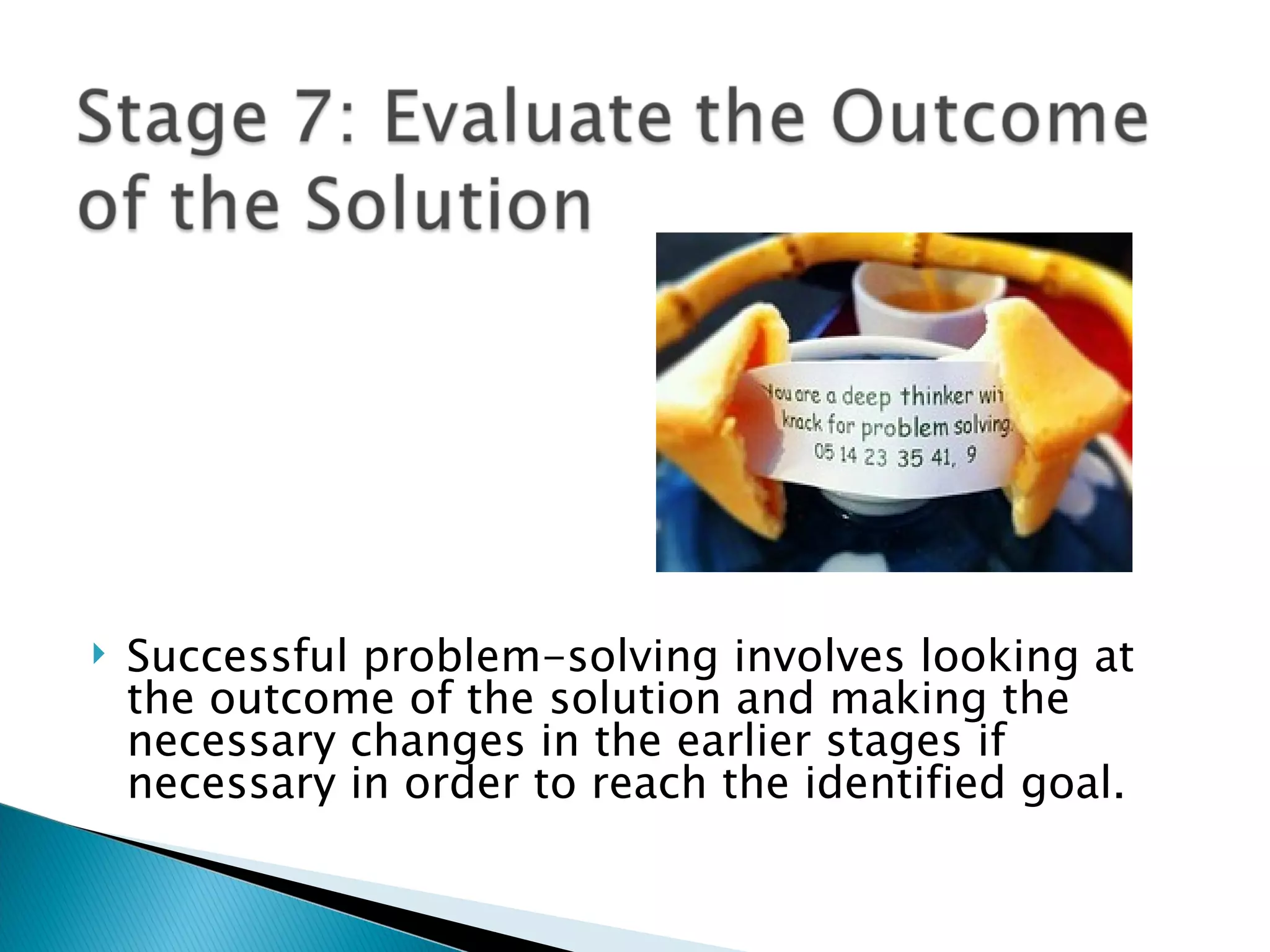The document outlines the stages of problem solving: 1) Clearly state the problem, 2) Identify the cause of the problem, 3) Analyze the problem and develop potential solutions, 4) Evaluate the potential solutions and select the best one, 5) Implement the selected solution, monitor its effects, and make changes if needed. Going through each sequential stage helps solve problems in a methodical way.

